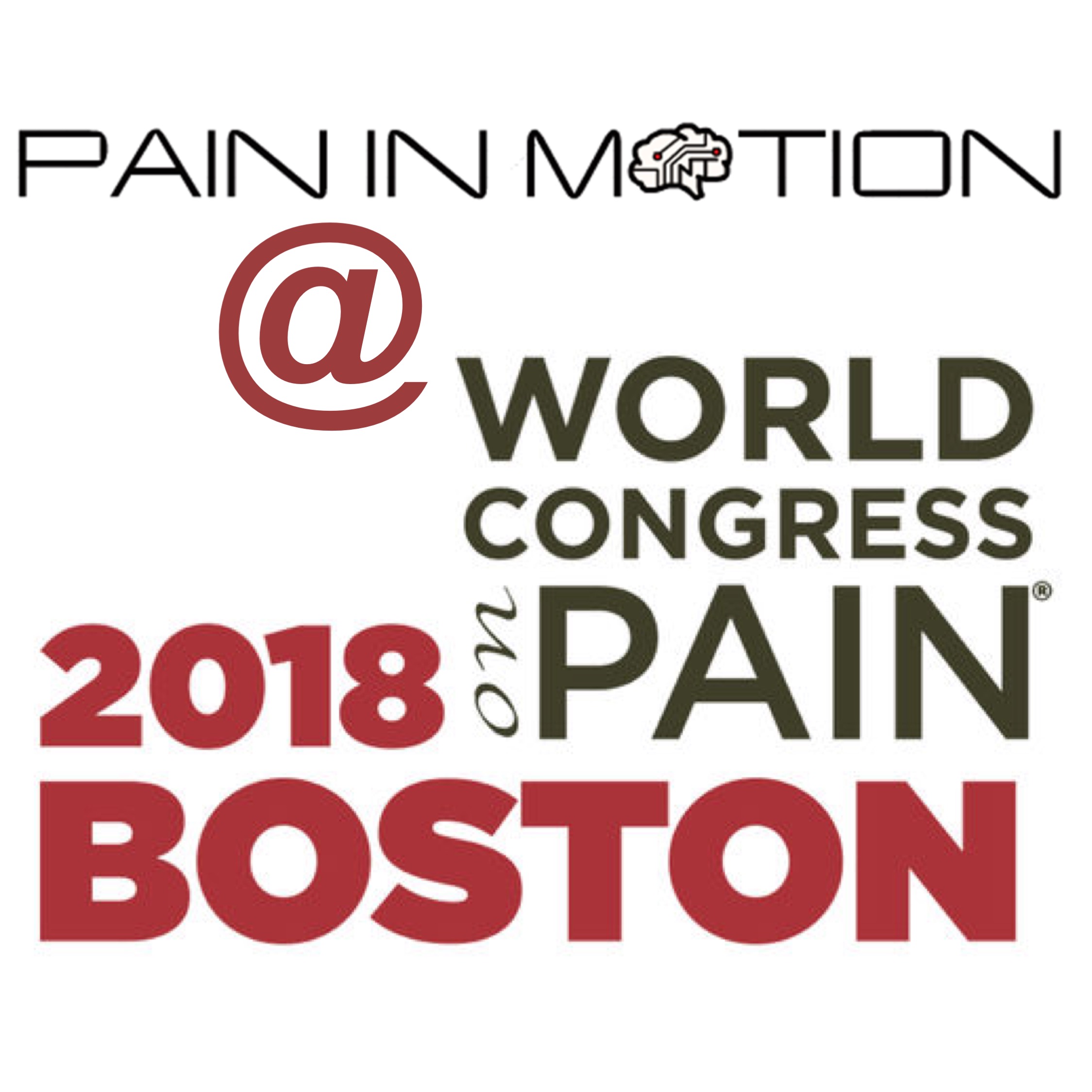The World Congress on Pain 2018, organized by the International Association for the Study of Pain (IASP) was held in Boston, Massachusetts, USA. This meeting focused on sharing new developments in pain research, treatment, and education. A small delegation of PiM members was present at this meeting to share their latest research with clinicians and researchers within the pain field.

Prior to this congress, the special interest group (SIG) on Pain, Mind and Movement organized a satellite meeting. The satellite meeting included two world-leading experts as keynote speakers (Marco Loggia and Adriaan Louw), four very interesting clinical workshops, and 16 oral presentations of cutting-edge research. As there were speakers from South Africa, USA, Brazil, Canada, Italy, Belgium, the Netherlands, the UK and Australia, many nationalities were represented on stage, and the meeting lend itself perfectly for international interaction and networking. From this meeting I definitely remember the keynote lecture of Adriaan Louw. Not only is he a gifted speaker, he also fiercely defended the PNE+ idea. PNE is short for Pain Neuroscience Education, a treatment modality that Adriaan does a lot of research on. Yet, in this lecture, he stressed the importance of the therapy following PNE, as PNE is very necessary, but as stand-alone treatment insufficient to help the patient. It was very inspiring!
Two days later, the congress itself started with an outstanding, yet comprehensive program. Many parallel sessions, a large number of poster presentations, and other activities made it often difficult to decide which session to follow. I was happy to see that the congress maintained a nice balance between more fundamental and more clinically applicable research, offering something interesting for everyone attending the congress. Although the World Congress on Pain is great for obtaining knowledge and gaining new insights, I especially enjoyed the possibility to talk with people from all over the world.
To end this blogpost, I would like to highlight the contribution of the attending PiM members to this congress. Together, we performed during eight poster presentations, four oral presentations, one clinical workshop and one panel workshop. Further reading on some of the presented topics, can be found below.
To summarize, it was a great congress, with loads of opportunities to connect and share with other researchers and clinicians. I am already looking forward to the 18th World Congress of Pain in 2020 in Amsterdam!
Anneleen Malfliet
PT, PhD
Member of Pain in Motion
Vrije Universiteit Brussel, University Hospital Brussels, Ghent University.
2018 Pain in Motion
References and further reading: